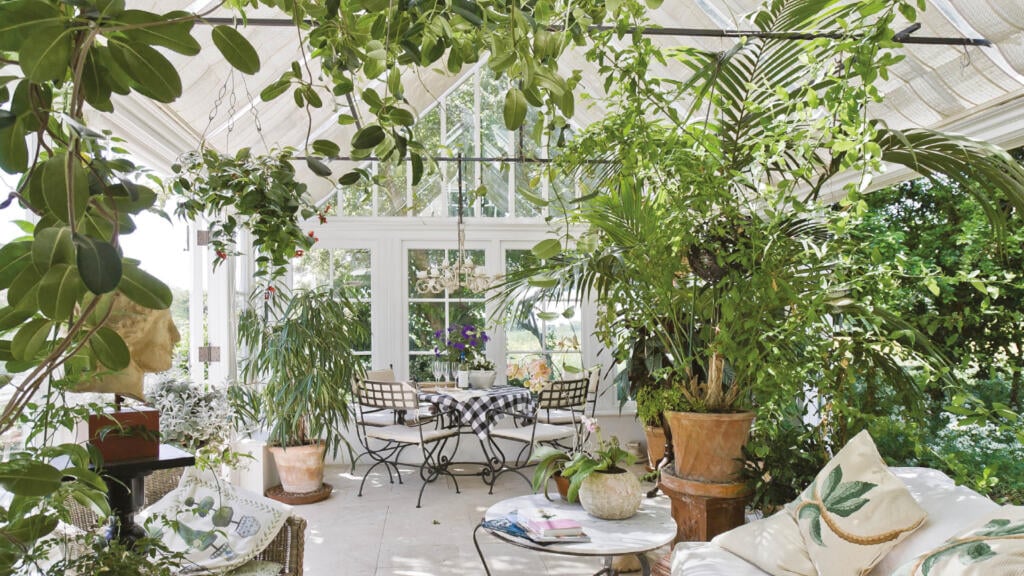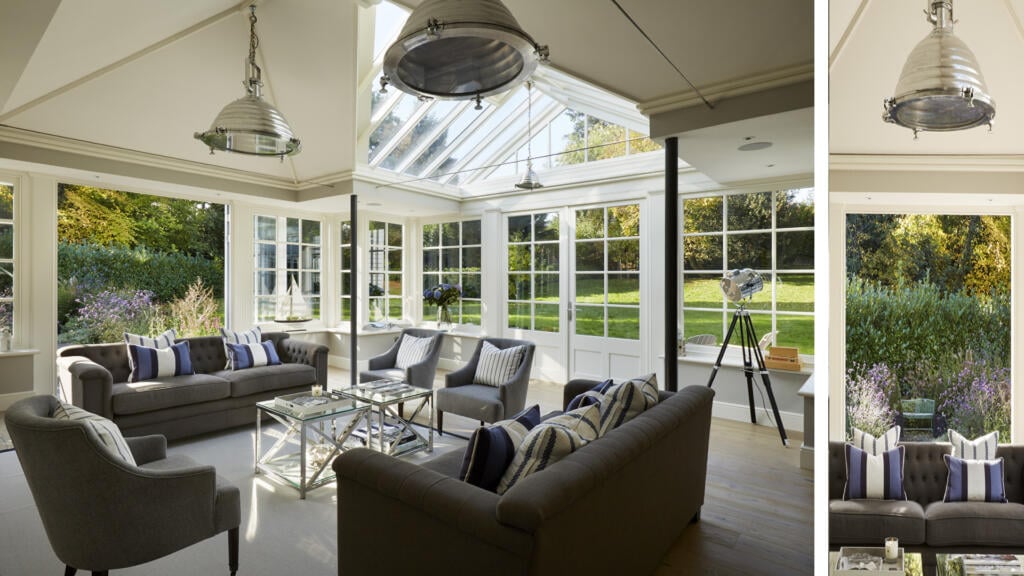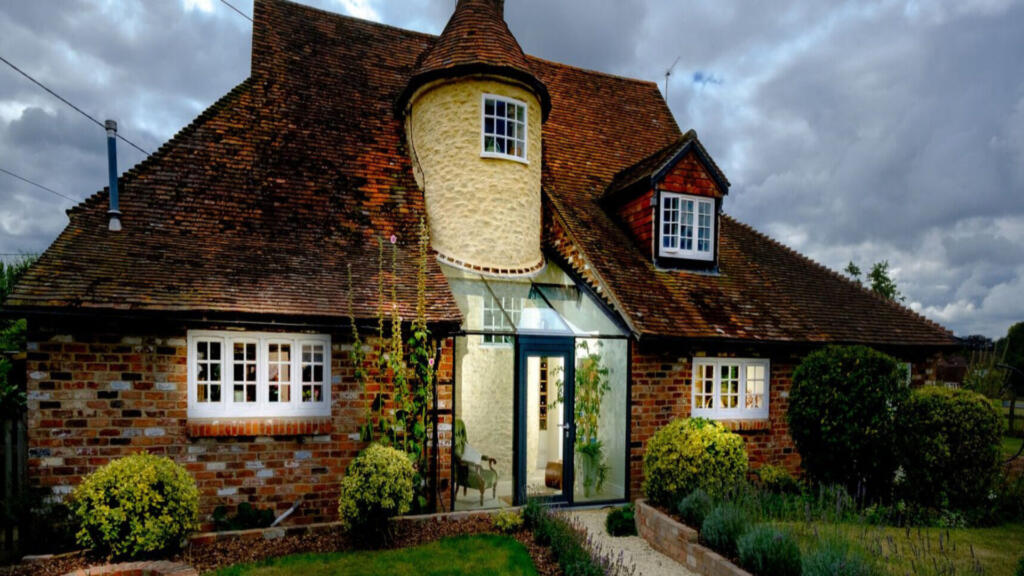
Get ready for summer with these sunny conservatory ideas
Sarah Harley
Clever ways to stop your conservatory getting too hot.
Many conservatories become sun traps in the summer months and are too uncomfortable to relax in. While a light-filled room is a bonus, it’s a difficult balance to achieve the perfect equilibrium – a room that is cool enough in summer and warm enough in winter.
So how do you achieve a comfortable temperature in a conservatory during the warmer months? Exceptional looks at the best ways to keep a conservatory cool so you can get the most out of your living space even in the height of summer.
Many conservatories become sun traps in the summer months and are too uncomfortable to relax in. While a light-filled room is a bonus, it’s a difficult balance to achieve the perfect equilibrium – a room that is cool enough in summer and warm enough in winter.
So how do you achieve a comfortable temperature in a conservatory during the warmer months? Exceptional looks at the best ways to keep a conservatory cool so you can get the most out of your living space even in the height of summer.
 Credit: Garden Trading
Credit: Garden Trading“Conservatory blinds are an excellent way to keep your space cool while also adding style,” says Rob Smith, general manager at ConservatoryLand. “Closed blinds can have a significant effect on temperature because they prevent sunlight from entering and overheating the room.”
And don’t worry about layering up. “It may come as a surprise,” says Oliver Hudson, blinds expert at BlindsbyPost, “but thermal blinds have just as much of a role to play in the summer as they do in winter. The insulating layer means they can reflect heat entering as well as preventing heat loss during colder months.”
With their cooling technology, Hudson expects more people will choose blinds to cool their conservatories over running costly fans and air conditioning units.
 Credit: English Blinds
Credit: English BlindsRegulating the temperature with blinds
Our resident interior expert, Sarah Harley, explains the tech behind blinds and how different fabrics help to keep a conservatory cool.
“Manufacturers have developed a range of hard-working fabrics and designs for conservatory blinds that make temperature regulation even easier.
“Although you might think thermal blinds would make the space warmer, it’s not the case. Pleated and duette blinds – both popular choices for conservatories – have extra temperature regulation as part of their design.
“Pleated blinds have a special aluminium coating that reflects the light back out to guarantee a more comfortable temperature. Perfect for windows and ceilings, they can also be motorised, meaning that you have immediate control even over high-placed blinds without leaving your seat.
“Duette blinds, also known as honeycomb blinds, have a double layer of fabric formed in a honeycomb-shaped structure, which traps hot air inside to ensure a warmer winter. This same feature, however, also makes it harder for heat to enter the space during the summer – a winning solution all year round.”
Finding conservatory blinds can be challenging with so many panels and different shapes to choose from, especially if you are shopping for roof blinds. But plenty of companies specialise in bespoke conservatory blinds, including Thomas Sanderson, English Blinds and Conservatory Blinds 4 Less.
Open the windows and invite the fresh air in to circulate around your conservatory. But on the hottest days, keep them shut between 11am-1pm, when the sun is at its strongest. When it’s very hot outside, it’s best to ventilate your conservatory in the early morning and evening.
Window and conservatory specialist SEH BAC recommends keeping your windows closed if the air outside your conservatory is hotter than the air inside.
 Credit: Thames Valley Windows
Credit: Thames Valley WindowsInstalling a wall-mounted air conditioning unit in your conservatory could set you back £2,000, according to figures published on Checkatrade. A cheaper alternative is a portable air conditioning unit, which will cost in the region of £400-£1,000.
Portable units are easy to set up and are ready to go as soon as they are plugged in. The downside is that they require an open window to allow an outlet pipe to disperse the warm air outside, meaning warm air can get back in through the gap. Some models have a window sealing kit, though they only work for certain window types. They can also take up valuable floor space.
Wall-mounted units are pricier but as they are off the floor, they won’t take up precious space or become a tripping hazard. And although they need installation, which can take up to a day, they can be retrofitted, with newer technology added later.
Wall-mounted units are also available in a wider range of sizes than portable units, so that you can get the perfect fit for your conservatory.
Tip
The unit size you require will depend on the dimensions of your conservatory, including the number of windows. ACS Installations has a handy online guide and calculator to help determine what you need.
Whichever option you choose, remember you’ll have to factor in the cost of running the unit. But they do have a dual purpose: besides keeping your conservatory cool in summer, they can also warm it up in winter.
When it’s too hot to open the windows, installing an electric ceiling fan is a cheaper alternative to air conditioning. Perfect for cooling small spaces like conservatories, they give instant relief. And if you fancy extra illumination during the darker evenings, plenty come with lights.
All ceiling fans should be installed or mounted with a floor clearance of at least 2.1m (7ft) and be set 45cm (18in) from all walls. For optimum airflow, the ceiling fan should be 2.4-2.7m (8-9ft) above the floor.
When planning the décor, think of light and airy furniture, and textiles that keep cool and reflect light, rather than dark and heavy fabrics and wooden furniture that absorb the heat. According to Thomas Goodman, property and construction expert at MyJobQuote: “Bamboo and rattan furniture that’s set on legs will help air to continue circulating freely.”
In terms of textiles, woven fabrics, like cotton and linen, will help air to circulate, creating a cool ambience.
 Credit: Benjamin Moore
Credit: Benjamin MooreTip
Add warmth with throws, cushions and rugs to hand, for when the temperature turns cooler.
Introducing dehumidifying plants to your conservatory can help make the air feel cooler because they remove moisture from the air, creating a dryer atmosphere. However, Kate Lindley, product manager at Baby Bio, suggests avoiding plants with large leaves as they are more likely to produce and hold moisture.
“A classic yet beautiful choice for reducing moisture in the air is a peace lily,” advises Lindley. “I also recommend English ivy and the Boston fern. Not only will they help to dehumidify a conservatory, they look pretty and will add a verdant touch to the room.”
Aside from drawing in moisture, plants can be used to create shade. Lindley says a banana leaf plant makes an attractive choice, while a citrus tree will thrive in the warmth. “Outside, a deciduous tree with leafy foliage is your best bet,” she adds. “Not only will it create some shade for your conservatory in the summer, it will also lose its leaves in the winter, meaning as much light and heat as possible will be let into the room in the cooler months.”
 Credit: Shutterstock/armifello
Credit: Shutterstock/armifelloWindow film, when applied to glazing, can reflect around 80% of the sun’s rays without blocking it out, according to The Window Film Company. In the process, it reflects heat away as well as UV light, protecting your skin and furnishings from sun damage.
A further advantage is that it cuts out glare, so if you use your conservatory as a working space or to watch telly, you won’t be plagued with unwanted reflections on your screen.
The film is applied to the inside of a conservatory roof panel and is available for glass and polycarbonate roofs, in different lengths and tints to suit your needs.
Reflective glazing
Although you can’t apply it yourself, Anglian Home Improvements has a similar system to combat the sun’s rays. Solaroof is based on an ultra-thin film applied to the roof glass. Rachael Munby, group marketing director, says: “It’s essentially like putting a pair of sunglasses on top of your conservatory roof and it rejects up to 75% of the solar heat getting through.”
It also has the added benefit of protecting fabrics from fading and reducing glare.
 Credit: Anglian Home Improvement
Credit: Anglian Home ImprovementIt’s best to ditch the carpet in a conservatory and go for flooring that doesn’t retain heat – or dirt for that matter. With so much traffic coming in and out of the garden during the summer months, an easy-to-clean floor is a must-have for a conservatory.
So, what are your options? Natural hardwood floors don’t retain as much heat as carpet, so are a good alternative. Another option is stone tiles, such as slate or granite, which are cool to the touch. However, stone is porous, so the Stone and Tile Company recommends sealing tiles every three to four years to form a barrier against water and grease damage.
 Credit: KonigOutdoor
Credit: KonigOutdoorUsing porcelain overcomes the issue of having to seal the tiles. Jo Oliver-Singh, director at The Stone & Ceramic Warehouse, points out that porcelain tiles are “fade, scratch, moisture, and UV-resistant. They’re also extremely hard-wearing, scratch and stain-proof, making them perfect for a room that leads to an outside space.”
Although porcelain is cool underfoot, it can absorb heat, so keep your blinds drawn during the hottest part of the day.
Tip
When you want to add warmth in the winter, simply use rugs to keep things toasty underfoot.

Written by Camilla Sharman she/her
Published: Updated:
With her 30 years of experience, Camilla Sharman has covered a wide range of sectors within the business and consumer industries both as a feature, content, and freelance writer. As a business journalist, Camilla has researched articles for many different sectors from the jewellery industry to finance and tech, charities, and the arts. Whatever she’s covered, she enjoys delving deep and learning the ins and out of different topics, then conveying her research within engaging content that informs the reader.

Sarah Harley

Sarah Harley

Sarah Harley

Sarah Harley